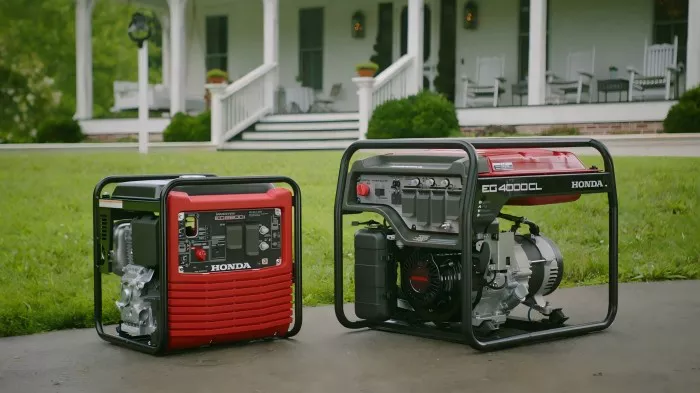Converting a diesel generator to run on natural gas can be an excellent way to utilize a more cost-effective and cleaner fuel source. This process involves several modifications to the generator to accommodate the properties of natural gas, which burns cleaner and has different fuel characteristics compared to diesel. This guide will detail the benefits of this conversion, the components required, and the step-by-step instructions to achieve a successful transformation.
1. Benefits of Using Natural Gas
Using natural gas as a fuel for your generator offers numerous advantages. Natural gas is a cleaner-burning fuel, producing fewer emissions compared to diesel. This contributes to a reduction in greenhouse gases and air pollutants. Additionally, natural gas is often more affordable than diesel, providing significant cost savings over time. It is also widely available through established pipeline networks, ensuring a consistent and reliable fuel supply.
2. Components Required for Conversion
2.1 Conversion Kit
A natural gas conversion kit is essential for this process. The kit typically includes a gas carburetor or mixer, which mixes natural gas with air before it enters the engine. It also includes regulators to control the pressure of the gas and various fittings to connect the gas supply to the generator.
2.2 Gas Supply Line
A gas supply line is needed to deliver natural gas from the main supply to the generator. This line should be installed according to local regulations and should be capable of handling the required gas pressure. Ensure that the supply line is made of appropriate materials to avoid leaks and ensure safety.
2.3 Gas Regulator
A gas regulator is necessary to manage the pressure of natural gas entering the generator. The regulator ensures that the gas is delivered at a consistent and safe pressure, preventing damage to the engine and ensuring efficient combustion.
3. Preparing the Generator
3.1 Inspection
Before starting the conversion, perform a thorough inspection of the generator. Ensure that it is in good working condition and address any existing issues that could complicate the conversion process. Perform necessary maintenance to ensure the generator is ready for modification.
3.2 Safety Precautions
Safety is paramount during the conversion process. Work in a well-ventilated area to avoid inhaling fumes. Wear personal protective equipment (PPE), including gloves and safety goggles. Ensure that the generator is turned off and disconnected from any power sources to prevent accidents.
4. Installing the Conversion Kit
4.1 Install the Gas Carburetor or Mixer
The gas carburetor or mixer is a critical component that mixes natural gas with air before it enters the engine. Follow the manufacturer’s instructions to install this component. Ensure that it is securely attached and that all connections are tight to prevent leaks.
4.2 Connect the Gas Supply Line
Connect the gas supply line from the main gas supply to the generator. Ensure that the line is properly secured and that all fittings are tight. Use appropriate sealants to prevent leaks and ensure safety.
4.3 Install the Gas Regulator
Install the gas regulator to control the pressure of natural gas entering the generator. Ensure that the regulator is set to the correct pressure as specified by the manufacturer. This step is crucial to ensure that the gas is delivered at a safe and consistent pressure.
5. Modifying the Engine Control System
5.1 Adjust the Fuel System
Adjust the fuel system to accommodate natural gas. This may involve calibrating the fuel injectors and adjusting the fuel pump settings. Since natural gas has different combustion properties compared to diesel, these adjustments are necessary to ensure efficient engine performance and avoid damage.
5.2 Install the Fuel Switching System
A fuel switching system allows you to easily switch between diesel and natural gas. This system is essential for flexibility, enabling you to switch to diesel if natural gas is unavailable or if the generator requires maintenance. The switching system typically includes a control panel or valve system to manage the flow of fuel.
see also: How to Turn a Diesel Engine into a Generator?
6. Testing the Conversion
6.1 Start the Generator
Once the conversion is complete, start the generator and monitor its performance closely. Listen for any unusual noises or vibrations and check for leaks in the fuel system. Ensure that the generator runs smoothly on natural gas and that all components function correctly.
6.2 Perform a Load Test
Operate the generator under load to verify that it runs efficiently on natural gas. This test will help you identify any potential issues and ensure that the generator meets your power needs. Make any necessary adjustments to optimize performance.
7. Maintenance and Safety
7.1 Regular Inspections
Conduct regular inspections of the natural gas system. Check fuel lines, connections, and the gas regulator for any signs of wear or leaks. Regular maintenance is essential to keep the system running efficiently and to extend the lifespan of your generator.
7.2 Routine Maintenance
Follow a routine maintenance schedule to keep the generator in optimal condition. Ensure that the gas carburetor or mixer and the fuel switching system are functioning properly. Replace filters and perform necessary repairs to maintain reliable performance.
Conclusion
Converting a diesel generator to run on natural gas is a practical and eco-friendly solution that offers both environmental and economic benefits. By carefully following the steps outlined in this guide and performing regular maintenance, you can achieve a successful conversion and enjoy a more sustainable energy source. This process not only supports green energy practices but also provides a cost-effective alternative for powering your generator. With proper installation and maintenance, your converted generator can operate efficiently and reliably, reducing your reliance on conventional diesel fuel.
Related topics:
- What Size Diesel Generator Do I Need?
- How Long Diesel Fuel Lasts in Generators?
- Using Heating Oil in Diesel Generators: Feasibility and Considerations

